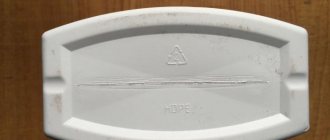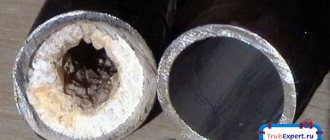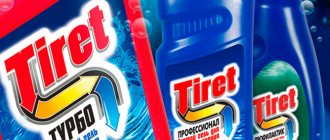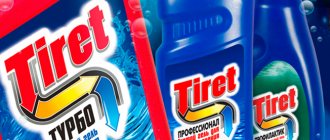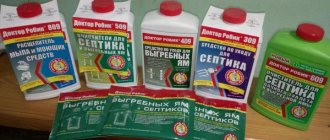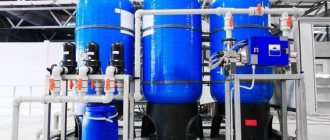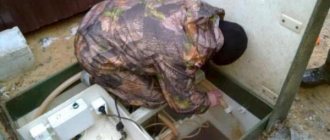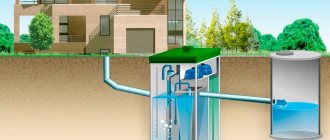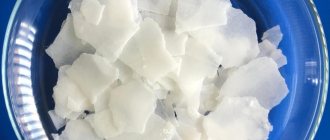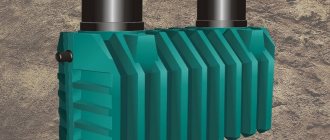The installation of an autonomous sewer system with a wastewater treatment plant in private construction is by far the most common phenomenon. These devices are popularly called septic tanks. There are many manufacturers of treatment plants, one of the most famous is the company Topol Eco, which supplies Topas septic tanks to the market. Today we will look at this product from all sides, from modification to installation method, and get acquainted with the advantages and disadvantages of septic tanks of this brand.
How does a Topas septic tank work?
TOPAS septic tanks are a four-chamber tank, in each compartment of which a certain degree of wastewater treatment occurs. According to the manufacturer, the output is up to 98% purified water, which is safe to send to the ground or for household (industrial) needs.
Each compartment contains active bacteria that process contaminants. To maintain their vital functions, oxygen is needed, so each section is connected to the ventilation system of the device.
Release form and composition
Avard, or penconazole, belongs to the chemical class of triazoles. The pesticide works better at the onset of the disease. It spreads throughout the plant faster than spores, and the mold does not have time to multiply.
"Topaz" is produced in the following packages:
- ampoules with a volume of 2 milliliters;
- plastic bottles with a capacity of 1 liter;
- 3 ml sachets.
Small volumes of the product are convenient to use in summer cottages, while large volumes are designed for hectares of farms and vineyards. Penconazole in its pure form is water-insoluble crystals. Therefore, it is converted into a suspension that can be added to water.
How does a Topas septic tank work?
The beauty of a septic tank is its efficient operation: it is able to convert all household wastewater into useful products - purified water and sludge, which can be used to fertilize the soil of the garden plot.
The cleansing process takes place in several stages:
- The liquid to be cleaned enters the receiving tank. It often contains impurities in the form of solid waste of biological origin. In the first chamber, the settling process immediately begins: heavy non-recyclable waste settles to the bottom, light fatty substances float to the surface.
- When the level of wastewater reaches a certain point and overtakes the float, it transmits a signal to the automatic system and the generator and pump start. The oxygen supply to the compartment is increased to activate bacteria, which begin to actively decompose biological products. Pipes with a filter allow liquid purified to 50% to pass into the second compartment.
- The second chamber is an aeration tank. Here, active decomposition of silt pollution occurs. To increase its performance, a large amount of oxygen enters the compartment. Some particles themselves become overgrown with silt, which allows them to settle in the next compartment.
- The third chamber is a secondary settling tank. Here the silt settles to the bottom, and the purified water remains on the surface.
- Next, the water is removed from the installation, passing through another filter, into a receiving tank, ditch or well. The degree of its purification reaches 98%, the liquid is suitable for irrigation and technical and household needs (not drinking). The sludge enters the stabilization chamber.
- In the stabilization compartment, sludge decomposes into fractions: heavy sludge settles to the bottom and accumulates there until removal, and light sludge is pumped into the first compartment and subsequently participates in the process of processing newly received waste.
The principle of operation of the TOPAS septic tank is based on the work of bacteria (sludge) and this process occurs continuously, for a long time (up to a day, depending on the volume).
Description and properties of the drug
The insecticide "Topaz" has a systemic effect. It is used on the following groups of plants:
- berry bushes;
- fruit trees;
- flower beds, ampelous flowers;
- vegetables;
- grapevines.
The product is used for the following diseases:
- brown spot;
- rust;
- gray rot;
- oidium.
The main area of application of the drug is the treatment of powdery mildew. When working with Topaz, you must strictly adhere to the dosage. Excess of the product harms the beds and crops.
Expert opinion
Zarechny Maxim Valerievich
Agronomist with 12 years of experience. Our best country expert.
Ask a Question
The active substance is called penconazole and stops the development of spores. Deprived of the ability to reproduce, the mushroom dies. The pesticide is used in rainy and hot weather and even during night frosts.
Prevention with Topaz is carried out in the spring, and treatment is carried out throughout the entire period of plant development. The fungicide is combined with pest control agents. But it cannot be used for more than three years. Fungi become insensitive to the pesticide after prolonged spraying. To avoid addiction, the product is alternated with fungicides based on another substance.
Septic tank modifications
The Topol Eco company develops and produces purification plants for various objects: country houses, residential cottages, small enterprises and hotels. The main difference between the models is the permissible capacity of the receiving tank and the performance of septic tanks, which is what you should pay attention to when choosing.
The operation scheme of Topas septic tanks is the same for all models. The difference is only in the size of the compartments and the power of the equipment.
| Model | Number of users | Processing volume, m3/day. | Salvo discharge, l | Power, kW/day | Dimensions (a*b*h), m | Product weight, kg |
| TOPAS 5 | 5,0 | 1,0 | 220,0 | 1,5 | 1,1×1,2×2,5 | 230,0 |
| TOPAS 5 long | 5,0 | 1,0 | 220,0 | 1,5 | 1,1×1,2×3,1 | 280,0 |
| TOPAS 8 | 8,0 | 1,5 | 440,0 | 1,5 | 1,6×1,2×2,5 | 280,0 |
| TOPAS 8 long | 8,0 | 1,5 | 440,0 | 1,5 | 1,6×1,2×3,1 | 350,0 |
| TOPAS 10 | 10,0 | 2,0 | 760,0 | 2,0 | 2,1×1,2×2,5 | 355,0 |
| TOPAS 10 long | 10,0 | 2,0 | 760,0 | 2,0 | 2,1×1,2×3,1 | 425,0 |
| TOPAS 15 | 15,0 | 3,0 | 850,0 | 2,9 | 2,1×1,2×2,5 | 370,0 |
| TOPAS 15 long | 15,0 | 3,0 | 850,0 | 2,9 | 2,1×1,2×3,1 | 435,0 |
| TOPAS 20 | 20,0 | 4,0 | 1000,0 | 2,9 | 2,25×1,7×2,6 | 620,0 |
| TOPAS 20 long | 20,0 | 4,0 | 1000,0 | 2,9 | 2,25×1,7×3,0 | 670,0 |
| TOPAS 30 | 30,0 | 6,0 | 1200,0 | 3,6 | 2,25×2,2×2,6 | 760,0 |
| TOPAS 30 long | 30,0 | 6,0 | 1200,0 | 3,6 | 2,25×2,2×3,0 | 810,0 |
| TOPAS 40 | 40,0 | 7,0 | 1300,0 | 5,8 | 2,25×2,2×3,0 | 890,0 |
| TOPAS 50 | 50,0 | 9,0 | 1500,0 | 7,2 | 3,25×2,2×3,0 | 1160,0 |
| TOPAS 75 | 75,0 | 12,0 | 2250,0 | 10,8 | 4,25×2,2×3,0 | 1470,0 |
| TOPAS 100 | 100,0 | 16,0 | 3000,0 | 14,4 | 3,25×4,0×3,0 | 2000,0 |
| TOPAS 150 | 150,0 | 24,0 | 4500,0 | 21,6 | 4,25×4,0×3,0 | 2940,0 |
Choosing a septic tank is not that difficult. The main criterion is the expected number of users. You should select the closest value to the index in the model brand.
“Standard” models (Topas 5, 8, 10, etc.) without additional designations are suitable for installation with a supply pipe at a depth of 0.4-0.8 meters. For more buried pipes, models with the long prefix are used; they can be buried at 0.9...1.4 meters.
The expanded model range includes septic tanks with water movement indication:
- “Pr” (forced movement of water), such models are chosen when the level of groundwater is high, the liquid is removed from the septic tank by a pump.
- “Us” (increased fluid movement). This installation is necessary when the septic tank is buried 140 mm relative to the inlet pipe.
For country houses and cottages, Topas 5...10 units are usually chosen; more powerful devices are chosen for small businesses and public institutions of varying traffic. Septic tanks Topas 100...150 are suitable for organizing wastewater treatment from a small area of a cottage community or an autonomous sewer system in a village.
Precautionary measures
The toxicity of the substance is class three. Belongs to a temperate species. Safe for living beings after processing. But during the treatment period, animals must be kept at a distance (150 m) from the spraying area.
Provide people with protection for their mucous membranes and skin. To do this, use a protective suit, long rubber gloves, glasses, and a hat with a net.
Carry out work at a distance. During the period of application, do not drink liquids or smoke. Processing near open flames and flammable objects is also prohibited.
Installation and installation of the Topas septic tank takes place in several stages
- They dig a pit. Its width should be 50-60 cm larger than the dimensions of the device. The depth of the pit should be equal to the height of the septic tank. In the future, sand 15-20 cm thick will be poured onto the bottom or a cushion will be installed, but we do not take them into account - the occupied space will just bring the installation 15-20 cm above the ground, which is necessary to protect the cameras from flooding. At the same stage, they dig a trench under the pipe. Its depth should be below the freezing level of the ground in the region.
- If loose soils predominate on the site, they should be strengthened with formwork made of plank flooring with cross members.
- Sand is poured onto the bottom in a layer 15-20 m thick and must be leveled. On wet soils saturated with groundwater, it is necessary to install a monolithic reinforced concrete pad, which will firmly fix the position of the device. To make a pillow, a 15-20 cm layer of crushed stone is poured onto the bottom, a thin layer of concrete (4-5 cm) is poured, then a frame is laid (a mesh of rods with a diameter of 8-10 mm), the top is covered with concrete mortar for another 10-15 cm. There may be no reinforcement if the base is not heaving, but it is better to make an additional margin of safety.
- A septic tank is placed into the prepared pit, in which holes for the pipes have previously been cut.
- Lay the pipe in the trench. If it is buried less than the freezing point, then it must be insulated or a ready-made insulated tube must be used. The slope must be at least 5 mm per 1 linear meter.
- The pipe is inserted into the septic tank through a pipe. The seam is sealed with the plastic cord supplied with the kit, which needs to be heated with a hairdryer. At this stage, the compressor is installed and the installation is connected to the electrical network.
- Place the outlet pipe and secure it in the same way as the inlet pipe.
- Fill the sections with water to a level 10-15 cm above the ground level. This is necessary to maintain the integrity of the plastic when backfilling and compacting the soil.
- The soil is poured into the pit, trenches with pipes and compacted.
Advantages and disadvantages
The main advantage of Topaz is its relative safety for the crop. Fruits and vegetables can be collected on time, which is convenient for owners of private plots. On farms, pesticide levels are checked using laboratory tests. It is not profitable for summer residents to order research for a small harvest.
Advantages and disadvantages
economical consumption;
three release forms;
long shelf life;
rapid absorption by plants;
action half an hour after spraying;
high efficiency between sprayings, regardless of the environment;
versatility;
compatibility and preservation of properties in combination with other insecticides and fertilizers.
accumulates in the ground;
does not destroy downy mildew;
the main component disintegrates slowly in hot weather.
To prepare an effective solution, a small proportion of suspension is required. To use the drug as intended, you need to be able to distinguish mildew from powdery mildew, otherwise the vineyard will die even after treatment with a fungicide. Penconazole in a weak solution disintegrates within a season. But in small areas the rate of decay of the substance decreases.
If you spray gooseberries and currants growing in the garden with “Topaz” for more than two years, a toxic dose of the active component will flow from the soil into the crops growing nearby.
In vineyards and apple orchards, a constant concentration of the drug, on the contrary, helps prevent the sudden spread of powdery mildew. Therefore, in specialized areas, the fungicide can be used for up to four years in a row. In the normal or rainy season, the harvest is harvested 2 weeks after treatment with Topaz. If there is a drought after the last spraying, the waiting period increases to three to four weeks.
See also
Instructions for use of Talendo fungicide, mechanism of action and consumption rateRead
How to maintain a Topas septic tank
After installation, it is necessary to start the installation. To do this, river silt is introduced into the chambers, which must increase in volume to begin productive work. This may take up to 3 weeks. Commissioning and commissioning work can only be carried out by professionals.
Maintenance of a Topas septic tank includes a set of periodic activities:
- Once every 3-4 months it is necessary to remove accumulations of solid settled masses of silt.
- The compressor membranes are cleaned once every 2-3 years.
- Once every 1-2 years it is recommended to completely clean the chambers by washing the walls and pumping out the sludge.
- Aeration equipment must be replaced after 12 years of septic tank service.
- When cleaning the installation and replacing parts, they simultaneously diagnose the operation of the system: float, compressor, pump.
Operating principle
The drug Topaz has the necessary effects due to the active substance - penconazole. When diluted, the concentration of the substance is 100 g per liter. The insecticide quickly penetrates the body of the fungus that has appeared on the plant. After which it helps to slow down development. Leads to complete destruction.
When released into liquid, it dissolves well. Not afraid of acids and alkalis. The active component does not give a chemical reaction when combined with them. The main component (penconazole) is absorbed quickly and well into all parts of the plant:
- leaves;
- sprouts;
- shoots;
- flowers.
Do-it-yourself septic tank cleaning
To clean the cleaning device from dirt, it is not necessary to call specialists; you can do the job yourself, saving on professional service.
Experienced craftsmen will tell you more about the process.
Before cleaning, you need to turn off the power supply to the compressor and wait until the sludge settles to the bottom.
To remove the main contaminants from the stabilizer, you need to open the lid of the septic tank, place a hose at the bottom, and direct the other end into a drain or other receptacle. Excess sludge can be removed no more than half the volume, otherwise the system will not be able to function. After this, the evacuated volume is filled with clean water and the compressor is started.
To clean the septic tank filters, you need to turn off the electrical power, then disconnect the airlift hoses from the nozzles. Airlifts are removed from the well and washed with a stream of water under pressure. Do the same with the solid waste receptacle. Then the hoses are connected in reverse order and the mechanisms are started.
Compatibility with other tools
To process plants, gardeners use substances of organic and inorganic origin. Not every instruction indicates the possibility of combining and reacting with other fungicides. Topaz is created in such a way that it does not harm plants even after combining with alkalis.
To ensure a harmless combination of the two fungicides, a trial application is recommended. Check the reaction after a few hours.
The instructions for Topaz indicate: you can safely process it after Kuprostat, Kimnix, Horus. With other substances you need to do a test (for your own peace of mind).
